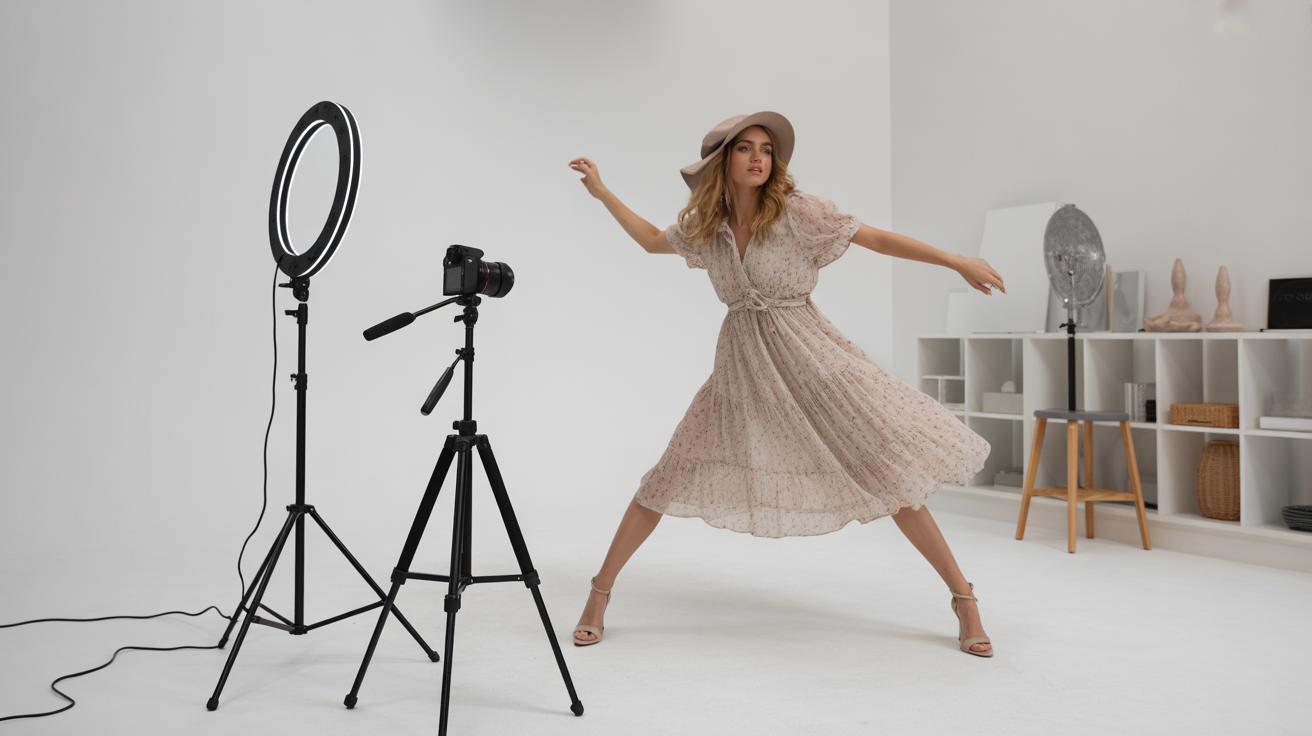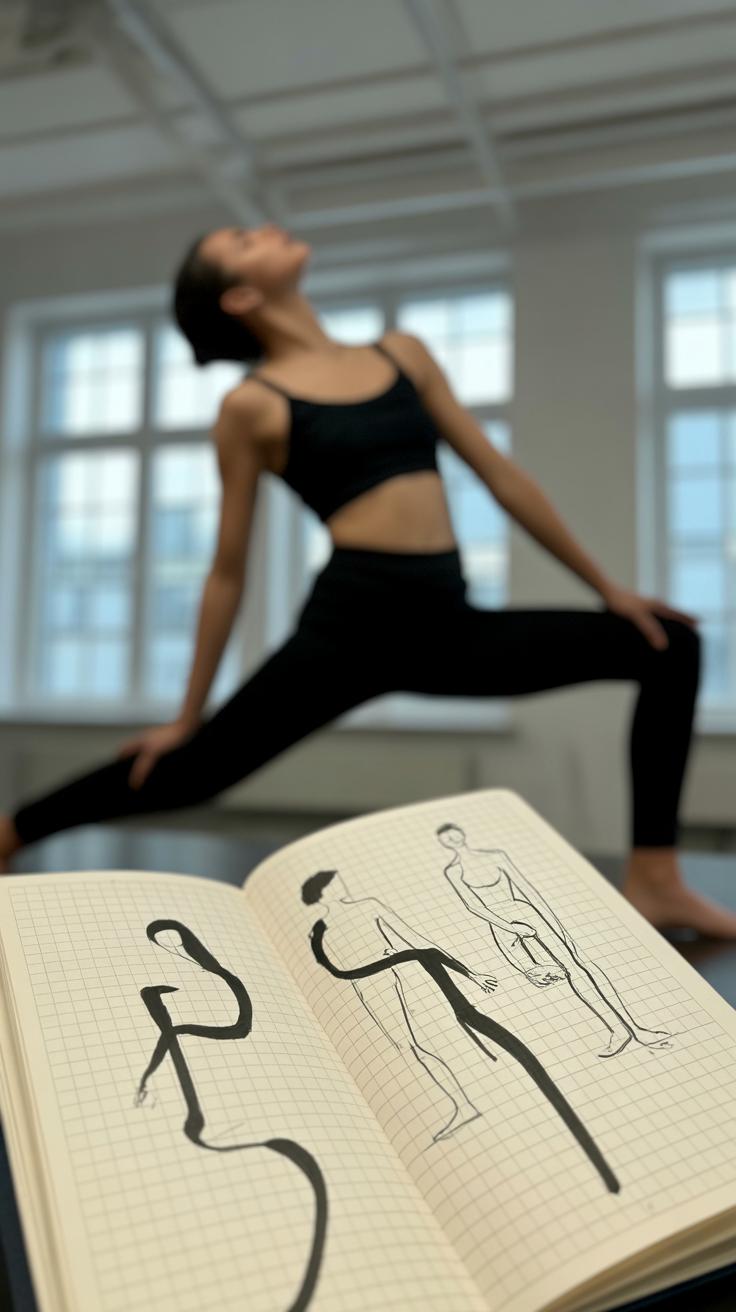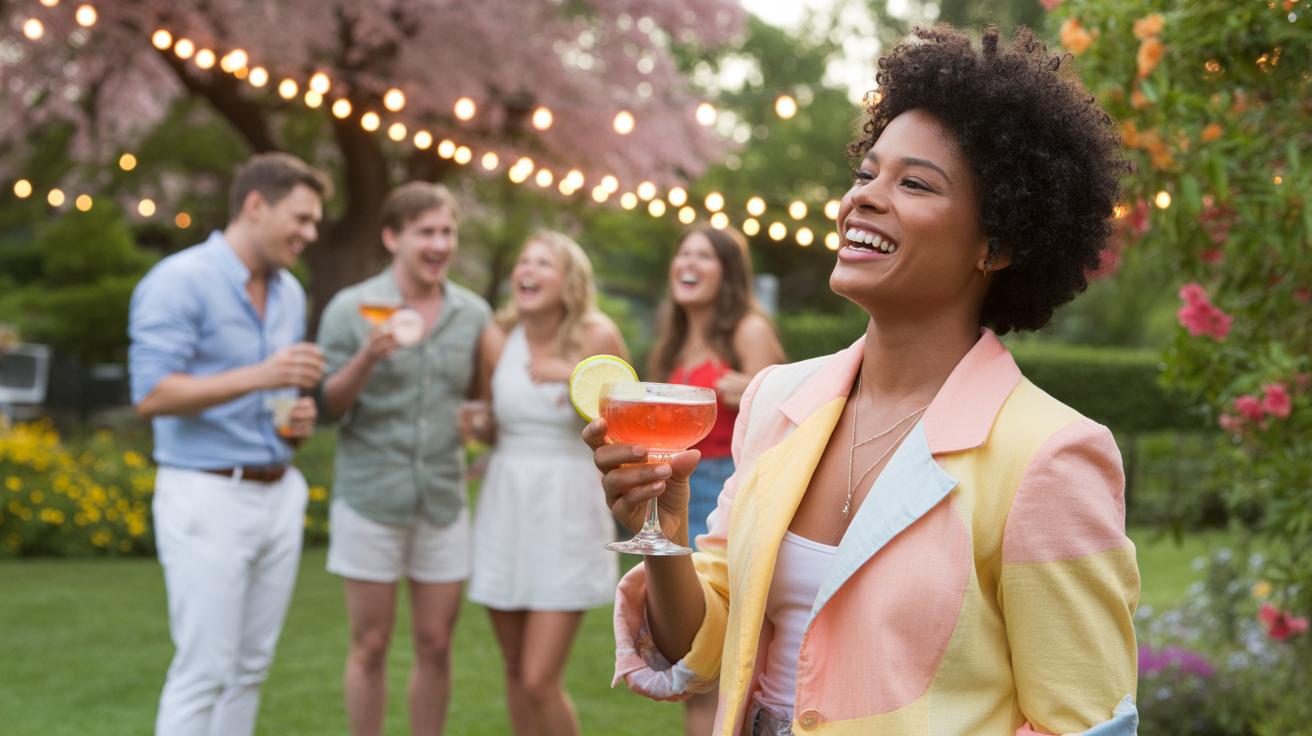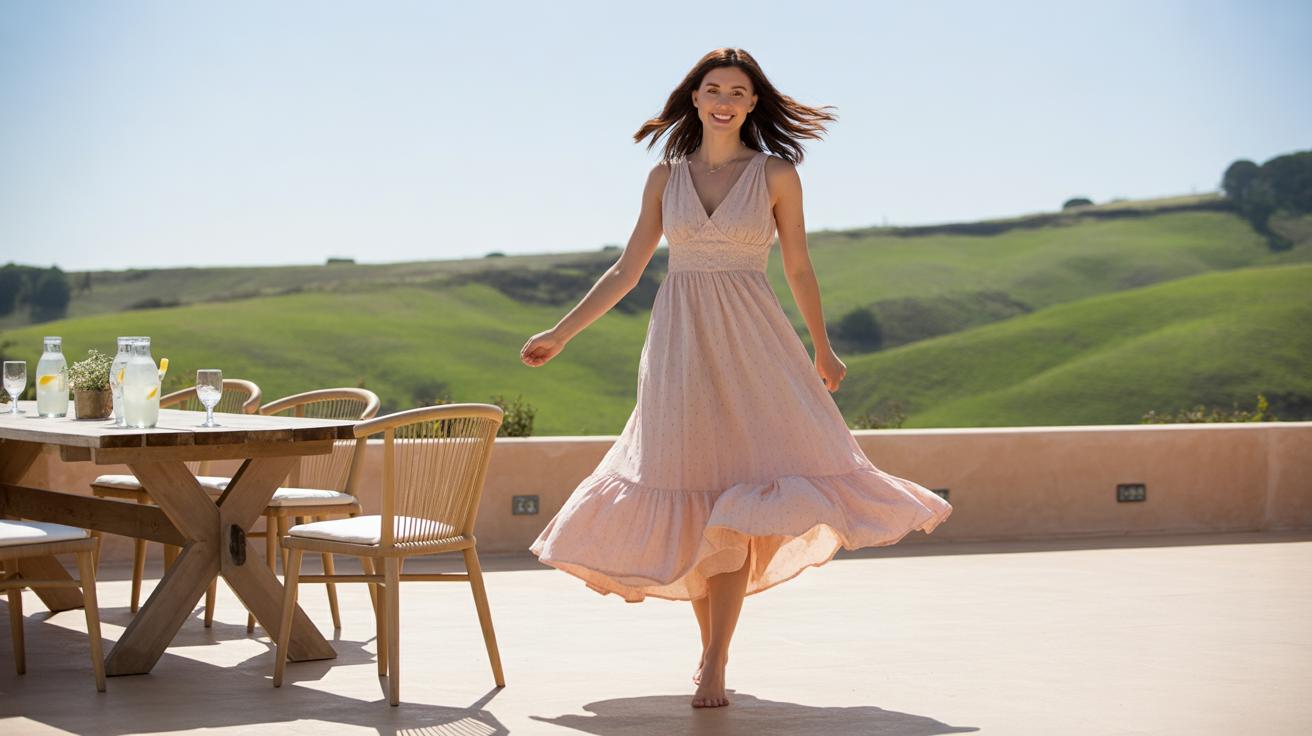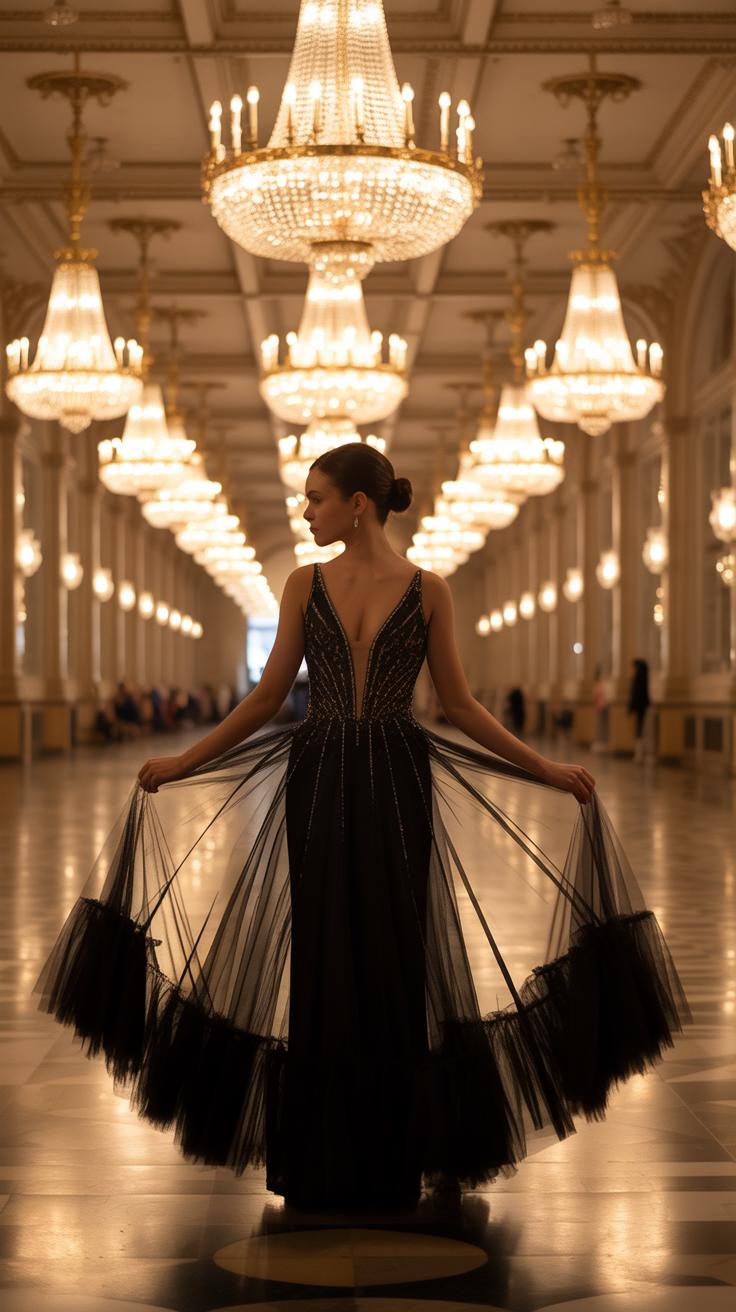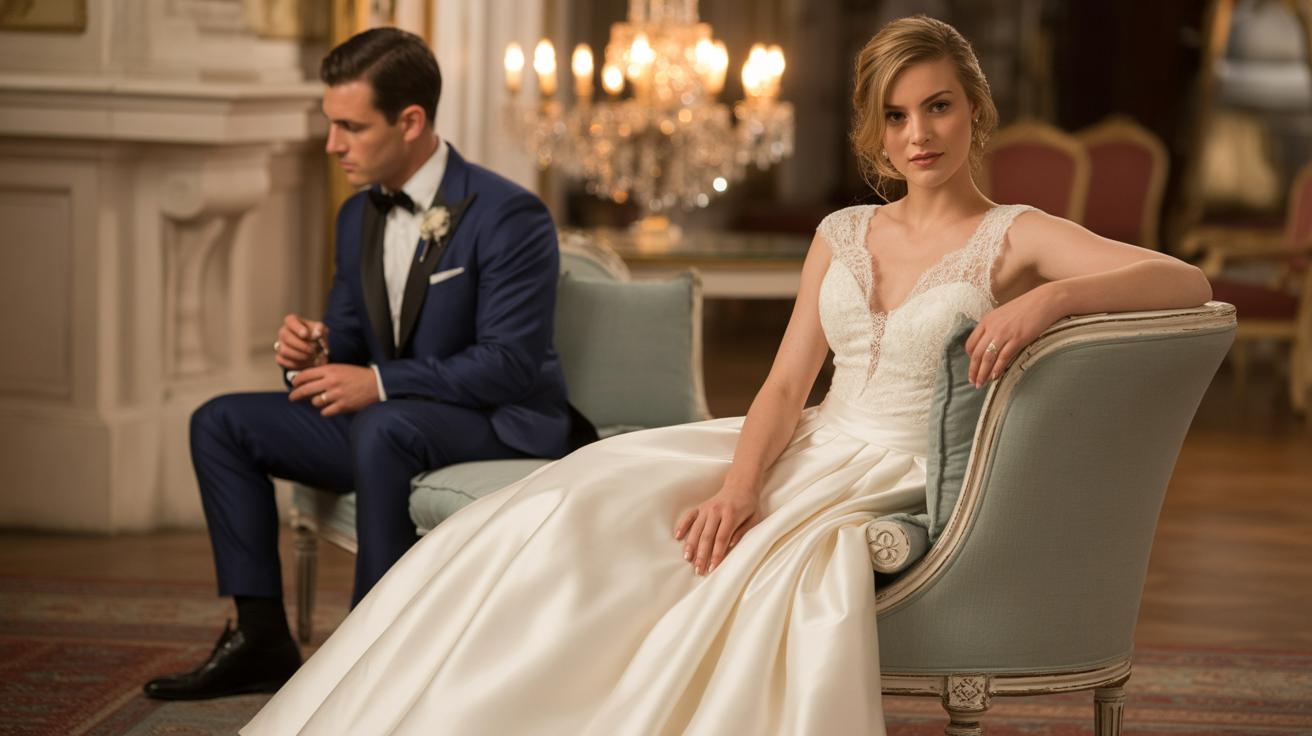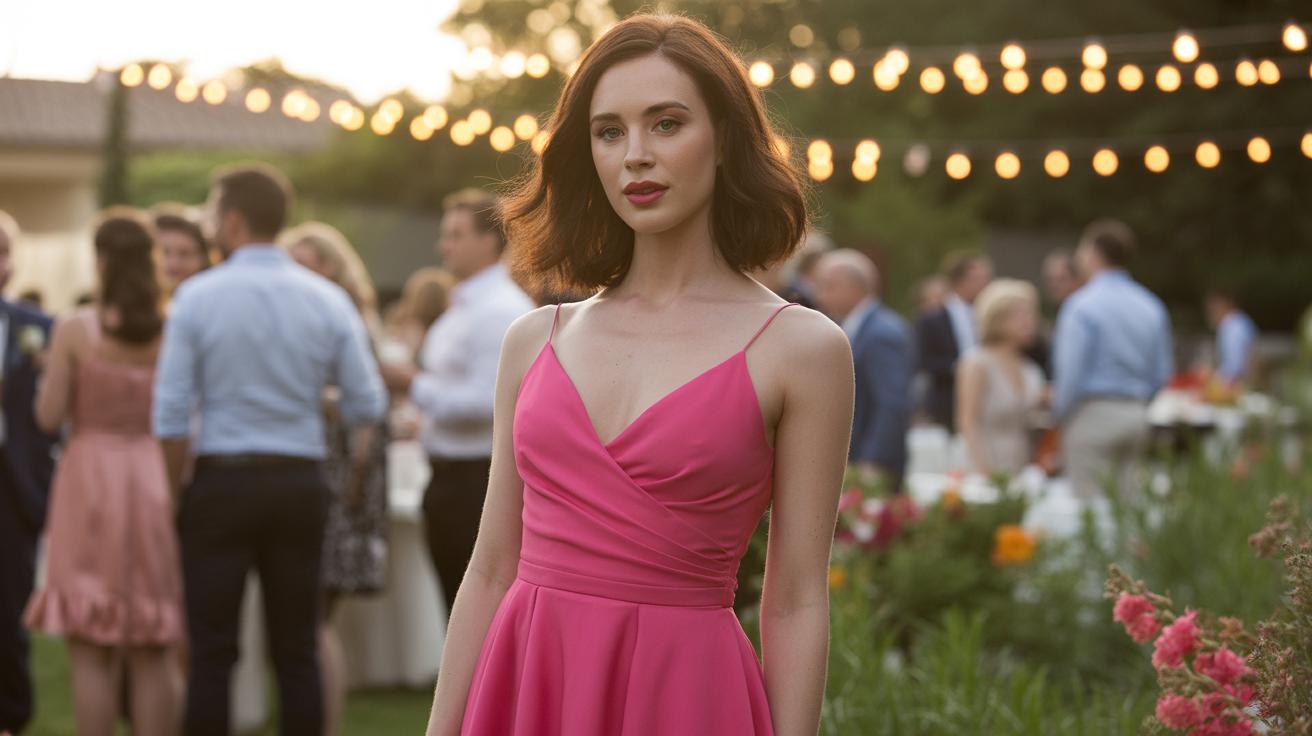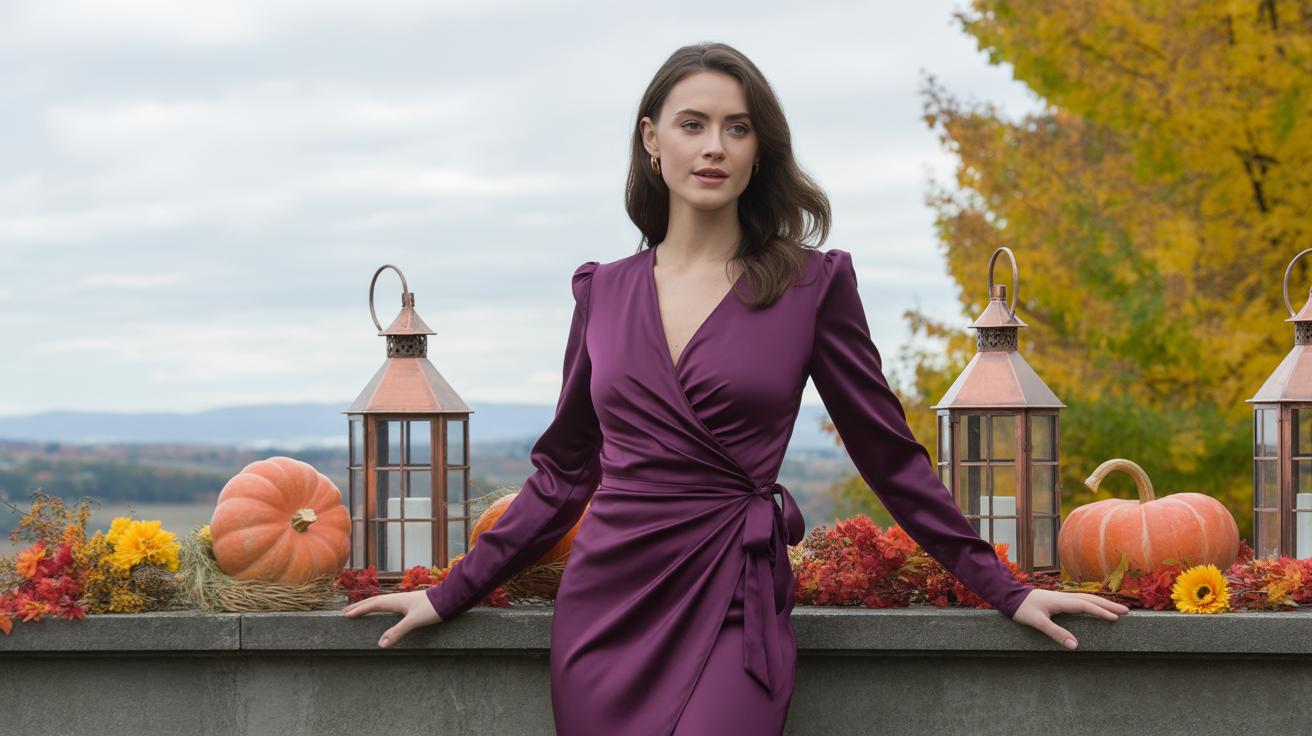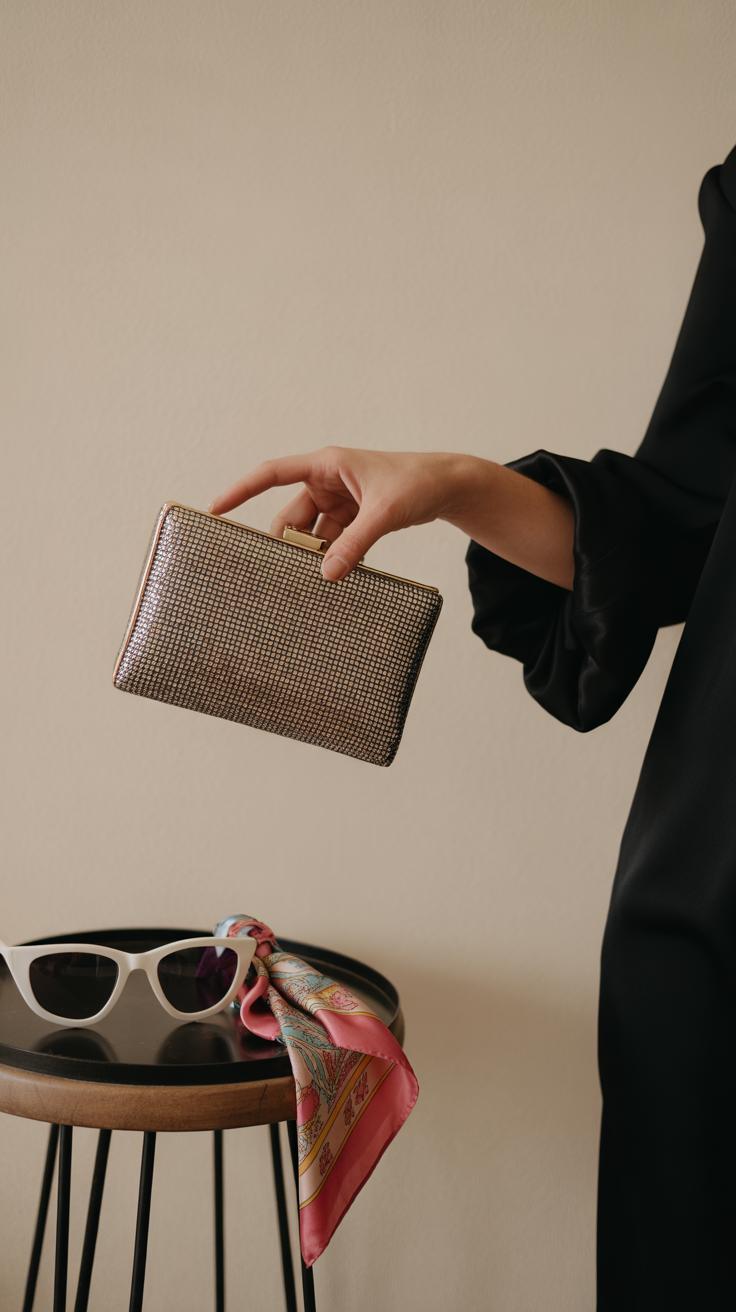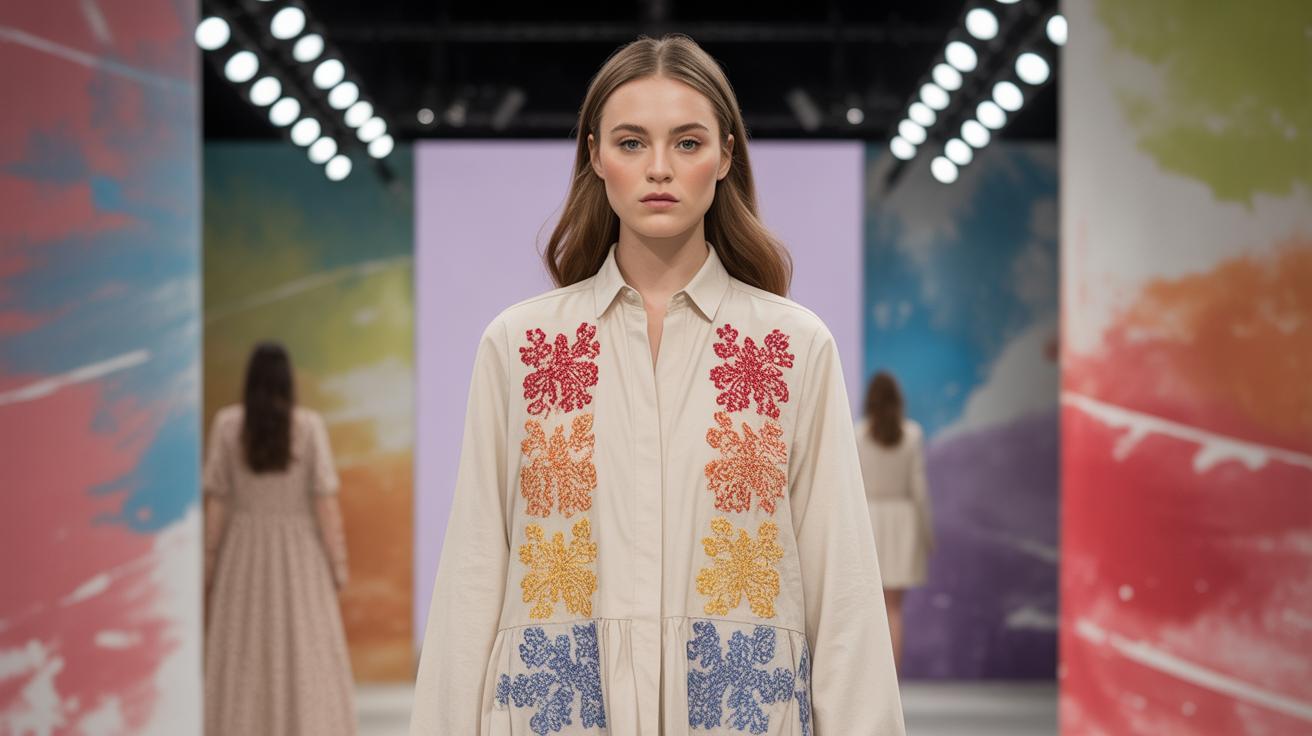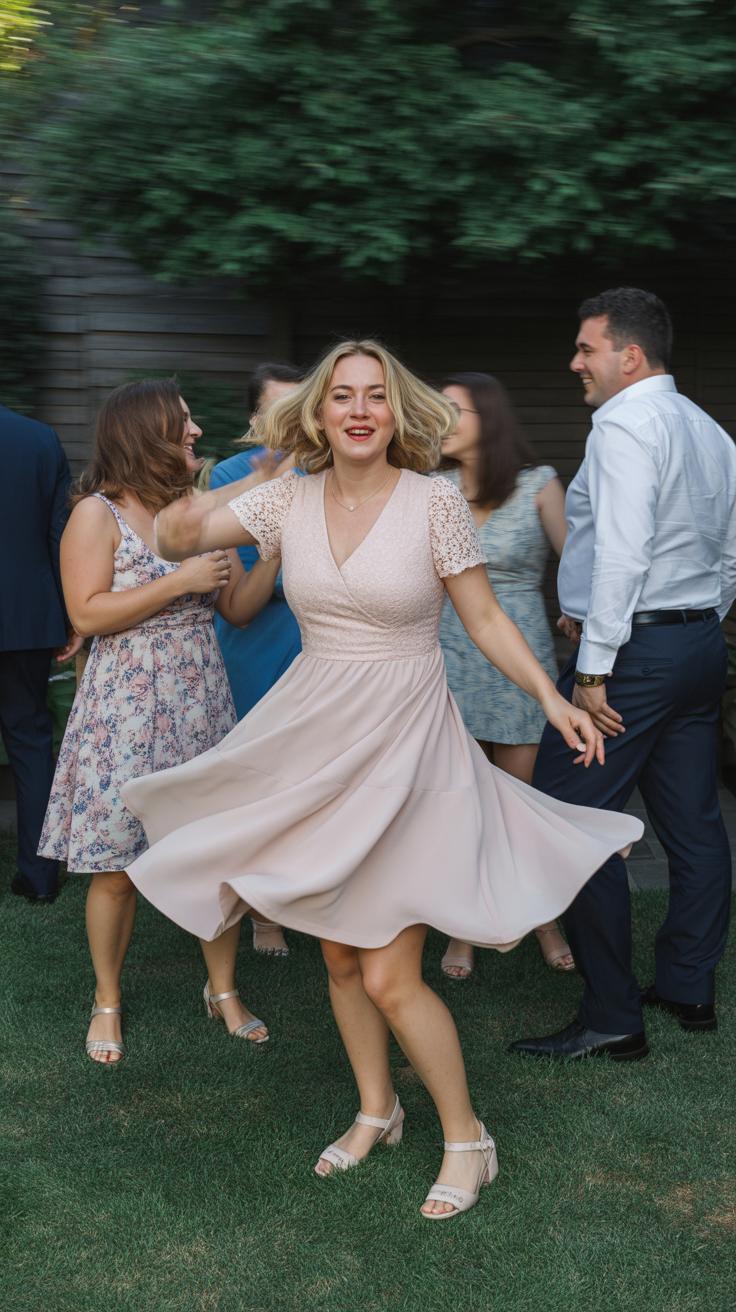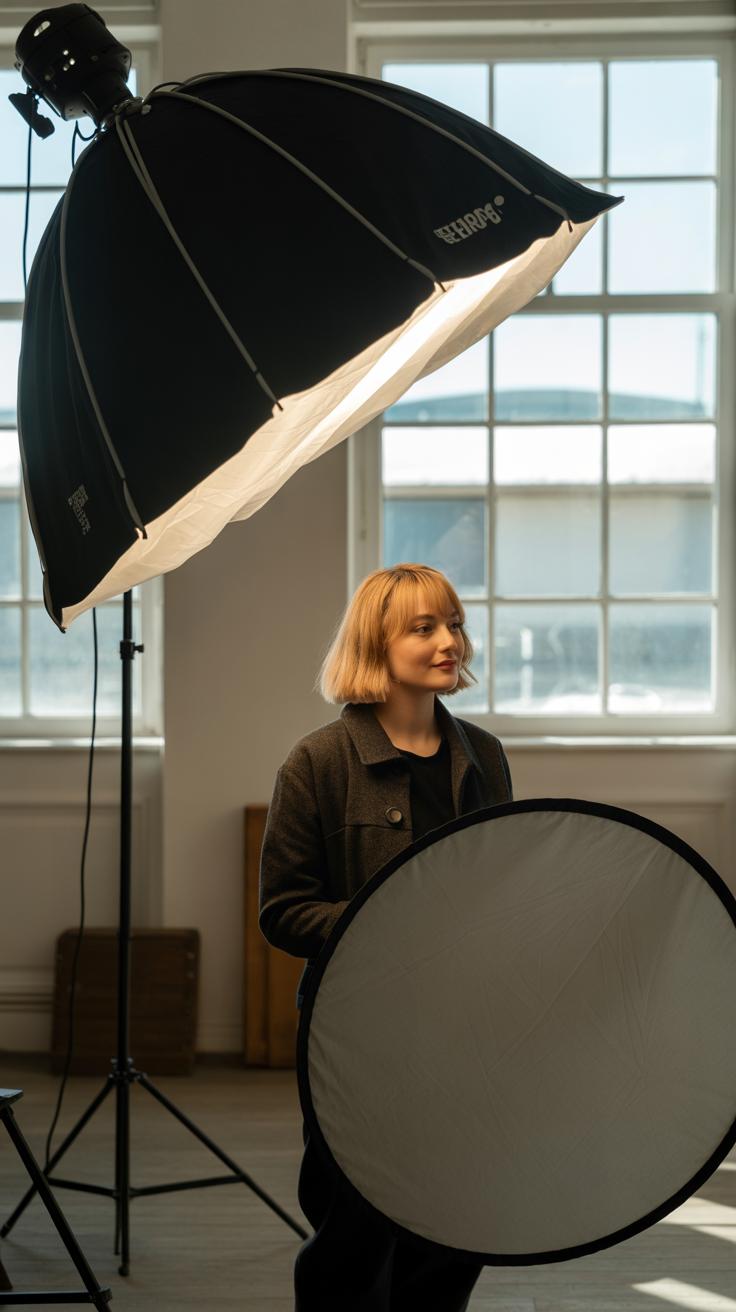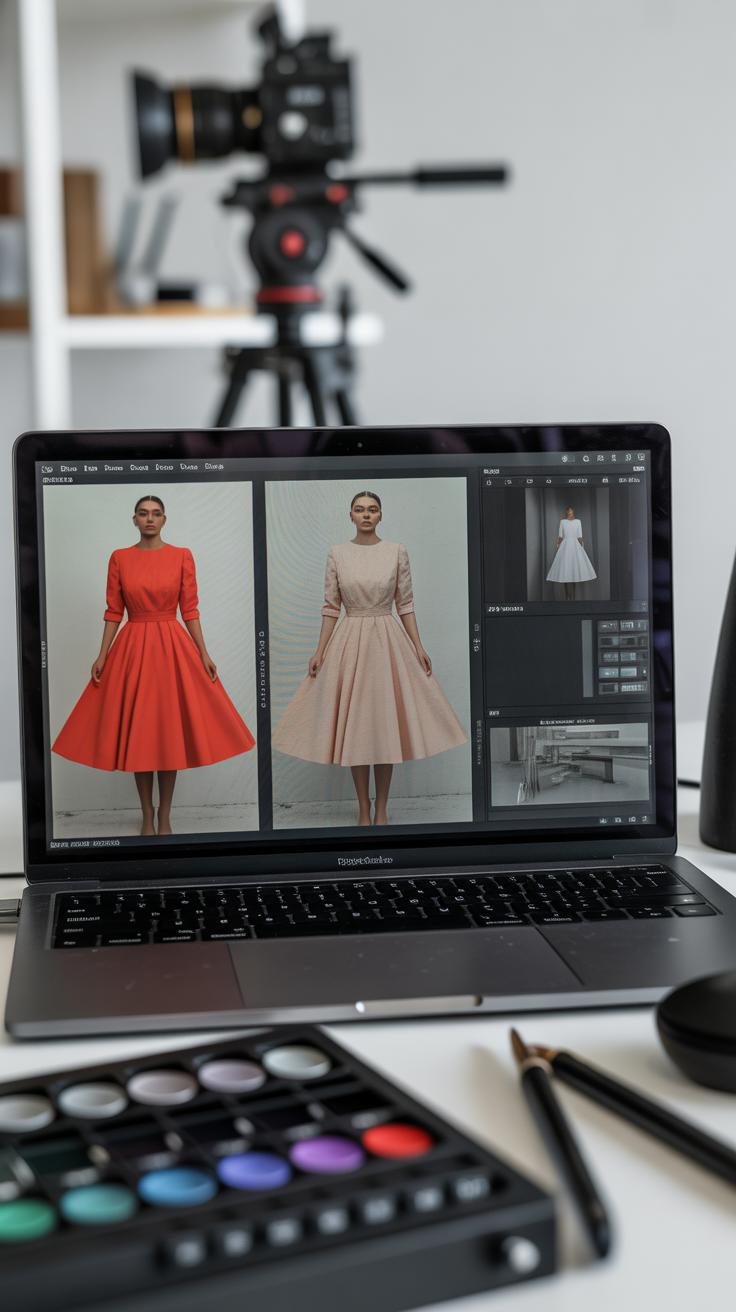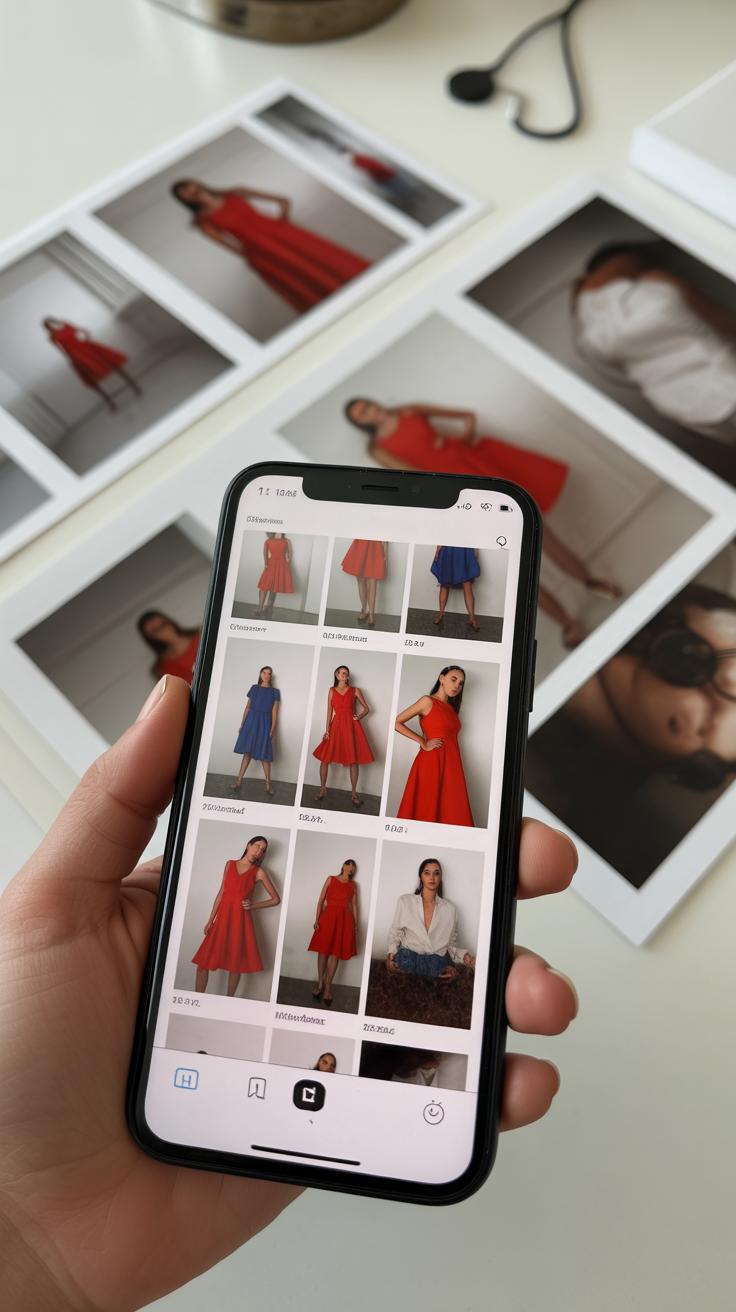Introduction
Social media platforms offer a dynamic way to share your fashion choices with the world. Capturing the perfect pose in your dress can highlight your outfit’s details and bring out your personal style. When you master the right dress poses, your photos can attract more attention and engagement, setting you apart as a fashion enthusiast or influencer. The variety of dress poses can emphasize different features, like the flow of fabric, the fit of the garment, or the accessories that complete your look.
This article will guide you through essential dress poses that work well for various styles and occasions. Whether you are aiming to flaunt a casual look or an elegant gown, understanding how to pose effectively helps communicate your fashion sense clearly through images. You will also find tips on lighting, angles, and body language to optimize your social media fashion photos, making your feed more appealing and professional.
Understanding the Importance of Dress Poses
Dress poses play a key role in how your outfit looks on social media. The right pose helps to highlight the dress’s unique details and fit. A well-chosen pose can show off the flow of a skirt, the sparkle of a fabric, or the cut of a dress.
When you pose, your body becomes a tool to emphasize the dress’s features. For example, turning slightly to the side can reveal the shape of a fitted dress better than a front-facing stance. Poses also add movement and life, making photos more interesting to viewers.
To make your photos stand out, try experimenting with different angles and movements. Tilt your head, move your arms, or change the position of your feet. Think of how each change affects how the dress is seen. This way, your photos will capture attention and highlight your style.
How Poses Showcase Your Dress
Poses can emphasize fabric texture by bringing light and shadow to important areas. For silky materials, slight movement in your pose reveals shine and drape. For rough fabrics, tight angles help display the texture clearly.
Adjusting your body position helps create shapes that flatter the dress and your figure. Leaning forward slightly can sharpen a dress’s shape around the waist. Stretching your arms up or out shows off long sleeves or wide necklines. Small changes make the dress’s color pop by catching the right light.
Think about how your pose interacts with your dress’s lines and colors. A loose dress may look great when you hold it out gently. A fitted dress might need poses that show the curves it creates. Experiment with your posture to find what feels best.
Engaging Your Audience with Poses
The pose you choose affects how viewers connect with your photo. A confident stance invites viewers to focus on your outfit. Soft or playful poses can create a mood that complements your dress style.
Ask yourself: Does my posture reflect the look I want to share? What message does my expression send? Are my movements natural or stiff? Adjust your pose to match the vibe you want, whether it’s fun, bold, or elegant.
Engage your audience by combining thoughtful poses with genuine looks. Your body language helps tell the story of your outfit. When your pose feels right, viewers spend more time appreciating your style and may engage by liking or commenting.
Choosing the Right Pose for Casual Dresses
Casual dresses often reflect ease and personality, so your poses should mirror that vibe. Focus on movements and angles that show the flow and comfort of your outfit. Try shifting your weight onto one leg to create a natural curve, or subtly turn your body to highlight the dress’s silhouette. Simple hand placements like gently touching your hair or resting your hand on your hip add a relaxed charm. Experiment with soft smiles or thoughtful expressions to inject personality into the frame. The idea is to keep your posture approachable but stylish to showcase the casual nature of your dress. What details of your dress do you want to highlight? Maybe a unique print, a comfy fabric, or the way it falls when you move. Align your poses to bring attention to those features.
Standing and Walking Poses for Casual Looks
Standing and walking poses bring life to your casual dress pictures. Keep your shoulders relaxed and avoid stiff poses that might make the outfit look forced. A slight step forward while looking away from the camera can add a dynamic and effortless feeling. Let your arms fall naturally by your sides or lightly touch your waist to create a soft frame around your dress. Try small changes, like tilting your head or looking down slightly. These tiny movements introduce warmth and make your photos feel genuine. When walking, let the dress sway with your steps, capturing the fabric’s motion. Have you tried a slow stroll instead of standing still? It often reveals how comfortable your dress really is.
Sitting and Leaning Poses
Sitting or leaning offers fresh angles to present your casual dress. Sit on a step, ledge, or bench with one leg slightly raised or crossed to showcase the hemline or texture. Leaning against a wall allows you to play with asymmetry — lean one shoulder in while keeping your back straight to highlight the dress’s shape. Your hands can rest gently on your knees, or you can use props like a bag or sunglasses to add interest. These poses break the rhythm and give your feed variety while highlighting how your dress works in different positions. Think about where you feel most comfortable sitting or leaning and how that spot complements your outfit.
Poses to Flaunt Formal Dresses
When you want to highlight an elegant formal dress, focus on your posture. Stand tall with your shoulders back. This helps show the dress’s shape clearly. Position your arms to draw attention to key details like sleeves or the neckline. For example, gently resting one hand on your waist can emphasize the waistline and fabric draping.
Try angles that reveal the texture or shine of the material. Turn slightly to the side so the light hits the fabric and shows off its quality. If your dress has long sleeves or unique cuff designs, lift your arm just enough to let viewers see those details without hiding the dress’s shape. Your pose should feel natural but deliberate.
Ask yourself: How can your body show the dress’s best features without overshadowing them? Small adjustments in arm placement or torso angle can make a big difference in revealing elegance and craftsmanship.
Elegant Standing Poses
Standing straight helps display the full length and form of a formal dress. Keep your spine aligned and your chin slightly up. This posture elongates your silhouette and highlights the dress’s cut. Place one foot slightly forward to add a subtle sense of motion while maintaining grace.
Rest your hands softly—either at your sides or gently touching your waist. Avoid stiff or tense arms. These natural positions bring out the dress’s flow and structure. If your dress has a slit or interesting hem, angle your legs to give a glimpse of this detail.
Have you noticed how a simple shift in stance changes the whole look? Try standing tall, then experiment with foot positions to see which best showcases your outfit’s length and design.
Movement Poses to Showcase Flow
Capturing the flow of a formal dress creates dynamic and eye-catching photos. Try slow, gentle twirls to highlight the dress’s fabric in motion. This is especially effective for dresses with full skirts or loose layers. The way the material moves tells a story about its texture and weight.
Walking poses work well to show how the dress reacts to natural body movement. Take slow steps and let your dress sway. Position your arms relaxed and let the dress’s fabric guide the shot. Avoid sudden or jerky movements to keep the look smooth and elegant.
Consider how your dress looks in motion. Does twirling bring out its shine? Does walking reveal hidden layers? Experiment with small movements to capture these details. Could your next shot show the dress both standing still and alive with motion?
Using Angles to Enhance Your Dress Photos
Angles change how your dress looks in photos. The way you position your body and where the camera is placed can highlight different parts of your outfit. For example, dresses with flowy skirts look great when you stand slightly turned, allowing the fabric to catch movement and light. Tight-fitting dresses can benefit from a slight twist at the waist, which adds shape and depth.
If your dress has unique details on the shoulders or neckline, shooting from a three-quarter angle can help show these off without making the photo too flat. Dresses with asymmetry or layers gain dimension when you tilt the camera slightly or lean forward. How often do you think about your angle before snapping a photo? Trying new angles can make your dress stand out in ways you didn’t expect.
High Angle and Low Angle Shots
High angle shots look down on you, which can make legs appear longer. This works well for short or fitted dresses since it adds height to your figure. You might feel the pose looks less natural, though, because the camera looks over your head.
Low angle shots, taken from below, can create a dramatic effect. They add emphasis to long dresses or gowns by making the dress seem even taller and flowing. However, low angles can distort proportions, so be mindful of how your body parts look. Experiment with both angles to find which suits your dress and your style the best.
Side and Back Angle Poses
Side poses let you show details missed from the front. If your dress has a slit, ruffles, or unique side cuts, this angle highlights them beautifully. Standing at a slight angle while turning your head toward the camera keeps the photo engaging.
Back poses add depth to your outfit by revealing buttons, lace, bows, or open back designs. Turning your shoulders slightly toward the camera softens the back shot and keeps it from looking too stiff. You can even use your hair or arm placement to frame these details. Have you tried turning your back to the camera to make your dress speak for itself?
Incorporating Accessories in Your Poses
Accessories do more than finish an outfit—they add layers to your pose. When you include them thoughtfully, they help tell a story about your style and mood.
Consider how your hands interact with accessories. Holding a bag by the strap can create soft angles in your arms. Letting a hat rest lightly on your fingers adds charm and breaks stiff poses. Jewelry like bracelets or rings draws attention to your hands; position them near your face or neck to highlight these pieces naturally.
Props such as sunglasses or scarves offer dynamic options to alter your look. You might pull sunglasses down slightly to show your eyes or drape a scarf over one shoulder for movement. These objects encourage interaction, which brings energy and interest to your photos.
Ask yourself what story your accessories tell. How can you use your hands or props to make your dress and personality stand out in new ways?
Hand Placement with Accessories
Pocketing your thumbs while holding a bag strap keeps your hands relaxed and looks effortless. Resting a hand lightly on a hat’s brim can frame your face beautifully without seeming forced. Sliding a necklace gently between your fingers creates a subtle highlight for jewelry.
When wearing multiple rings, try showing a few fingers to emphasize detail. Avoid stiff, straight arms. Instead, bend your elbows slightly to prevent a rigid look. Letting your hands rest near your waist or hips often feels natural when you wear belts or wristbands.
Think about how your hand placement can guide the viewer’s eye to both your accessories and your outfit. Does your pose feel comfortable? Are your hands enhancing the look or drawing attention away?
Using Props to Add Interest
Sunglasses make excellent interactive props. Adjusting them or holding them near your lips creates moments of candid style. Scarves invite movement; tossing one over your shoulder or letting it flutter adds life to static photos.
Other props like purses, flowers, or even coffee cups can add context to your dress photos. Holding a coffee cup naturally, with relaxed fingers and a soft grip, shows ease and gives your pose a lifestyle feel.
Avoid forcing props into your photos. Instead, use them to express the vibe you want. How can a simple scarf or your favorite pair of sunglasses help you stand out?
Expressing Personality Through Dress Poses
Your facial expressions and body language tell a story about who you are. They add life to your dress photos and show your unique personality. When you feel natural and confident, that energy shines through.
Try to relax your face and avoid forced smiles. A gentle smile can feel inviting, while a serious look creates a bold, stylish vibe. If your dress is fun and flirty, a playful expression fits perfectly. Imagine how you want others to see you and let that guide your expression.
Your body posture also speaks volumes. Stand tall with shoulders back to appear confident. Shift your weight to one leg for a relaxed yet elegant feel. Using simple hand movements, like gently touching your dress or placing a hand on your hip, can draw attention to details in your outfit and show ease.
Ask yourself: What part of my personality do I want to highlight? When you choose expressions and poses that feel true to you, your photos become more powerful and memorable.
Facial Expressions that Work
Your face sets the mood for your outfit photo. A soft smile brings warmth, making your dress look approachable. When wearing classic or formal dresses, a calm, serious expression adds sophistication.
For casual or colorful outfits, a playful grin or even a laugh can show your fun side. Notice how your eyes move—maintain eye contact with the camera or look off to the side to create different emotions.
Try several expressions in front of a mirror to see which feels natural. Which smile feels like you? Can a serious gaze show your confidence? Your face should match the style and story your dress tells.
Body Language Tips
Your body communicates confidence before your face does. Stand straight to immediately improve your presence. Avoid slouching; it can make your outfit lose its shape.
Use simple gestures like placing a hand on your waist or gently touching your neckline to emphasize your dress. Lean slightly forward or tilt your head to add interest and soften your pose.
Moving naturally, even in small ways, prevents stiffness. Shift your feet or sway lightly to keep the photo lively. What pose feels easy to hold for a few seconds? The more relaxed you are, the better your body will express your confidence.
Lighting Tips for Dress Photography
Lighting plays a key role in highlighting your dress’s best features on social media. Knowing how to use light can make a simple outfit look stunning in photos. Natural light works well outdoors, especially during the early morning and late afternoon when the sun is low. This soft light brings out true colors and delicate textures without harsh shadows.
Position yourself so the sunlight hits the dress from the side or front to enhance details like lace, embroidery, or fabric flow. Avoid shooting under direct midday sun, as it creates unwanted shadows and flattens colors.
For indoor shoots or creative effects, artificial lighting gives you control. Using softboxes or ring lights can focus attention on specific dress sections, like sparkling beads or intricate patterns. Try adjusting the brightness or the angle of light to create mood—bright for freshness, dimmer for mystery.
Imagine your favorite dress and ask yourself: how can light help tell its story? Experiment with different light angles and sources to find what best expresses your outfit’s style and texture before snapping the photo.
Using Natural Light to Your Advantage
Natural light softens the overall look of your dress and enhances its colors gently. Early morning and late afternoon light produced by the sun gives a warm glow that makes fabric textures more visible. Light coming from the side adds dimension by casting subtle shadows on folds or ruffles.
Try standing near a window or heading outside during golden hour. These settings avoid harsh contrasts and help avoid blown-out highlights or dull colors. When sunlight filters through clouds, you get the best soft light that reduces glare and reflects colors accurately.
Look closely at your dress in natural light. Do the colors pop? Do textures like silk, velvet, or chiffon show detail? Use those qualities to craft your pose and framing, so your photo draws attention to what makes your dress unique.
Artificial Lighting for Controlled Effects
Artificial lighting lets you shape the mood and focus in your dress photos. A ring light can create even lighting on the whole dress, eliminating shadows on smooth fabrics. Softboxes placed at angles can highlight texture or add depth to lace and embroidery.
Spotlights help emphasize certain dress features such as beading or sequins. You control shadows by changing their position. Cooler light bulbs bring out crispness in whites and blues, while warmer light emphasizes reds and earth tones.
Using colored gels or dimmers adds creative effects you cannot achieve with sunlight. Think about the vibe you want: soft and romantic, bold and dramatic, or fresh and clean. Setting up your artificial lights accordingly lets you highlight the aspects of your dress you want your followers to notice most.
How to Prepare for a Dress Photoshoot
Choosing the right outfit is the first step in preparing for a dress photoshoot. Select a dress that fits well and aligns with the shoot’s theme and location. Consider the colors, patterns, and fabric texture. Accessories should complement the outfit without overwhelming it. For example, if your dress is vibrant, keep jewelry simple to avoid distraction. Matching your shoes and bag to the outfit adds cohesion to the final look.
Groom yourself before the shoot by paying attention to hair, skin, and nails. Clean, styled hair and subtle makeup can enhance your natural features. Take time to do a trial run of your hairstyle and makeup to ensure they look good on camera.
Practice poses in front of a mirror to find flattering angles. Try shifting your weight, tilting your head, and experimenting with hand placements. This helps you feel comfortable and see what looks best. To calm nerves, try deep breathing or light stretching before the shoot. Confidence reflects in photos, so remind yourself why you chose the outfit and what you want to show through your pictures.
Selecting the Outfit and Accessories
Think about the shoot’s purpose when picking your dress. Is it casual, formal, or themed? Choose a dress that matches the mood and location. Bright colors stand out outdoors, while neutral tones work well indoors. Consider the dress length and fit for comfort and style.
Select accessories that enhance the outfit’s features. If your dress has heavy patterns, use simple earrings or a thin necklace. For solid dresses, bolder accessories can add interest. Keep your shoes clean and suitable for the setting. Avoid items that clash with the dress or steal focus from it.
Take photos of your chosen outfit and accessories together before the shoot. This gives you a preview of how they work and a chance to make changes early. Ask yourself, does this outfit reflect the story I want my photos to tell?
Pose Practice and Confidence Building
Spend time in front of a mirror testing different poses. Notice how your body feels when you shift weight from one leg to another or when you lean slightly forward or backward. Simple movements like crossing your arms or placing hands on hips create strong shapes in photos.
Focus on your facial expressions as well. Try smiling with your eyes, slightly part your lips, or hold a neutral look. This variety helps you find what fits the mood.
Before the shoot, try breathing exercises or listen to calming music to relax. Visualize yourself confident and enjoying the session. This mental prep can reduce tension and improve your posture during shooting. Ask yourself, what pose makes me feel most like myself? Practice that often.
Try combining poses with small movements to create natural looks rather than stiff poses. Use time to learn your best angles, and remember that your confidence will shine through more than any perfect pose.
Editing Photos to Enhance Dress Presentation
You can make your dress photos stand out by using simple editing tools that improve how your outfit looks. Adjusting colors helps the fabric appear true to life or even more vibrant, catching your viewers’ attention. Increasing brightness a little brightens up the dress without washing it out, making all the details clear.
Try to keep the color balance natural. For example, if your dress is blue but looks dull in the original shot, tweak the saturation to bring back that fresh blue tone. Adjust shadows and highlights to add depth, so your dress doesn’t look flat. How does your outfit look with a slight increase in contrast? Often, small changes make a big impact.
Photo cropping is another key tool. You can trim out distractions or unwanted background to pull focus toward your dress. Focus on tight framing around the dress or its key features like a neckline or skirt flare. Sometimes, switching to a vertical crop emphasizes the length of the dress, while a square crop can center attention on details.
Think about where your viewers’ eyes should land first. A well-chosen crop guides them straight to your outfit, not to cluttered background elements. Have you tried cropping your photos in different ways to see what highlights your dress best? The right frame can make your pose and outfit look sharper and more intentional.
Building a Social Media Fashion Portfolio
Your dress photos and poses form the foundation of a strong social media fashion portfolio. Each image contributes to telling your fashion story. Focus on posting regularly to maintain visibility and build recognition.
Select poses that highlight unique details of your outfits, such as the flow of a skirt or the cut of a jacket. Changing your angles helps avoid repetitive looks. For example, pairing a side profile pose with one facing forward creates variety while keeping attention on the dress.
Think about how your posts look together on your profile grid. Aim for a balance between close-ups, full-body shots, and detail-focused images. This variety keeps visitors interested and shows your versatility.
Consistency in sharing content helps attract followers who appreciate your style. Make sure your captions tell a story or offer insights about your outfit choices. Ask yourself: What message does this pose send about my style? How does it fit the overall theme of my portfolio?
Creating a Consistent Style and Theme
Pick a color scheme that matches your personality or wardrobe. Using similar backgrounds or settings in your photos adds a sense of unity. For instance, a white or neutral backdrop helps your dress stand out and creates a clean look.
Choose a pose style that reflects your brand. If you prefer minimalism, simple, relaxed poses work. For bold looks, strong stances and direct eye contact communicate confidence. Staying within one or two pose styles helps your feed feel organized.
Think about lighting and props too. Natural light often complements most dress colors without harsh shadows. Avoid cluttered backgrounds that distract from the outfit. Your goal is to direct the viewer’s eyes straight to the dress.
Engagement Techniques for Fashion Content
Invite your followers to join your style journey. Asking questions like “Which pose do you like best for this dress?” encourages comments and interaction. Sharing short tips on how you choose poses can build trust and position you as a helpful creator.
Use calls to action that prompt your audience to engage, such as “Tag a friend who’d wear this look” or “Save this pose idea for your next shoot.” These simple prompts increase reach and build community.
Respond to comments thoughtfully. When followers ask about your outfit or pose, answer clearly and personally. Engagement turns casual viewers into loyal fans who return for your next posts.
Conclusions
Successfully showcasing your dress on social media requires a blend of creativity and understanding of your outfit’s features. By selecting poses that complement the dress style, you enhance its visual appeal and convey confidence. Well-executed dress poses draw attention and increase your online engagement, making your posts memorable. Practice diverse poses to discover which ones align best with your style and the dress’s characteristics, creating a distinct fashion identity.
Remember that the best dress poses communicate your personality and highlight the garment’s details. Experimenting with different angles, movements, and expressions enriches your photo collection. Keep your audience interested by varying your poses across posts. With these strategies, your social media will mirror your fashion sense authentically and impressively, setting a solid foundation for your online presence or influencer journey.


